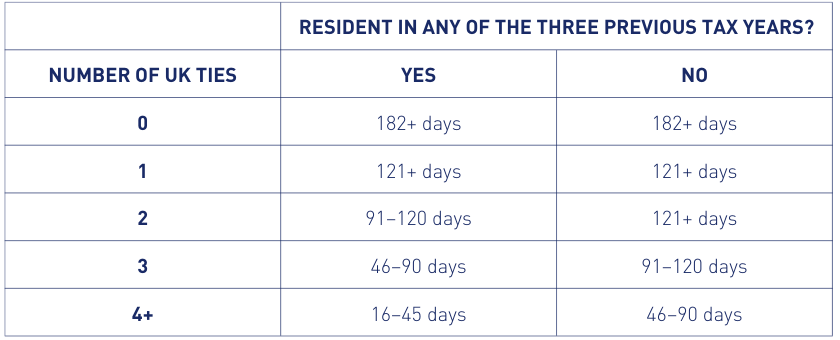£100 million money laundering conviction: Lessons for accountants
In 2022, Emirati national Abdulla Alfalasi was jailed for nine years, following a conviction for leading the biggest...
READ MORE
Some clients present complex residency questions. Here’s a guide to the ‘sufficient ties’ test and a case study that illustrates it in action.

The UK’s Statutory Residence Test assesses whether someone is a resident for tax purposes. For many, the answer will be clear-cut: they are not resident if they meet the criteria of the automatic overseas test, and are resident if they meet the criteria of the automatic UK test.
When a client does not meet the criteria of either test, agents need to find out more about their clients’ lives to work out whether they have sufficient ties to the UK to be considered a resident for tax purposes.
Someone is likely to be considered non-UK resident if they are working overseas and spending little time in the UK – there are minimal allowances that account for periods where non-residents might visit family in the UK and even work in the UK for short periods.
Spending more than 182 days in the UK or working all year in the UK makes someone a UK resident for tax purposes. Those who predominantly work in the UK, or who own and spend time in homes in the UK but not overseas, are also likely to be UK resident.
If neither the overseas or UK tests apply, the sufficient ties tests can settle residency questions.

If an individual was a UK resident in one of the previous three tax years, and spends more days in the UK in the current tax year than they do in any other country, this may also be considered a tie – this is called a ‘country tie’.
If someone doesn’t meet the requirements for any of the automatic overseas, automatic UK or sufficient ties tests, they’re not considered a UK resident for the tax year.
Alex is a UK resident, based on the sufficient ties test.
With those four ties to the UK, and having been a tax resident in the previous three tax years, Alex only needs to spend 16 days in the UK to be considered a UK resident. So while he might feel pretty dislocated, HMRC knows Alex’s home is where his heart is!
The IFA Tax Series 2024 features expert speakers in three two-hour webinars. Find out more.